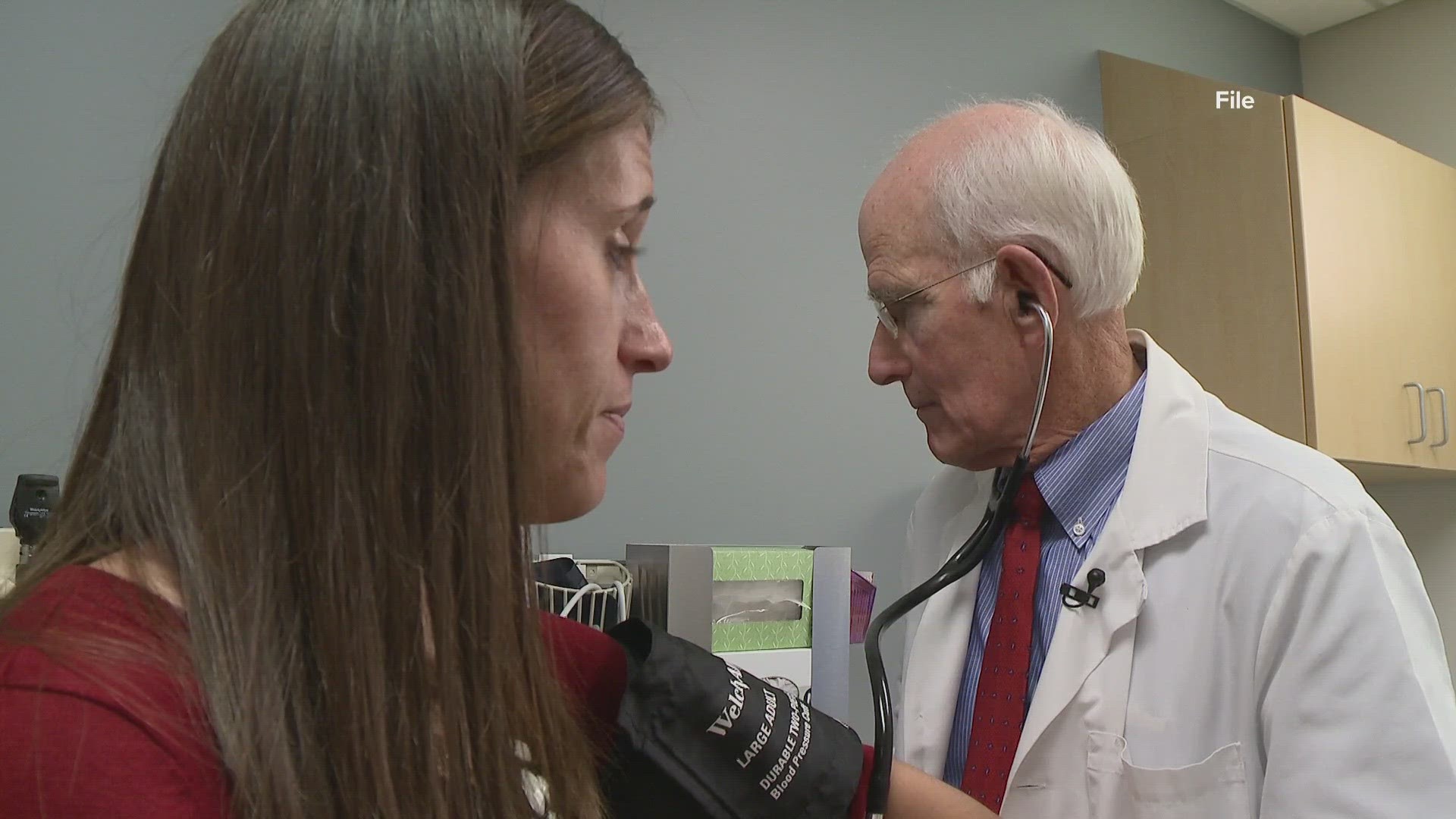PORTLAND, Maine — Have you noticed it takes longer to schedule an appointment with your primary care physician? Or, once there, you feel more rushed through it? Dr. John Rodriguez said it's a problem nationwide, but it's impacting every community, especially small ones.
"I see a lot of my primary care friends have called it quits, and they’ve either left the scene already or they’re joining big groups," Rodriguez said. "Or they’ve left health care, and they’re working for insurance companies."
Why? It's largely because of doctor burnout.
Rodriguez is a chief medical officer of a direct primary care office. Essentially, it’s a practice that either has a membership fee or takes direct payment from the patient, removing the need for an insurance company. It’s not an affordable option for everyone, but Rodriguez said it does afford a more intimate relationship with patients and cuts down on overwhelming paperwork, which have become two reasons for doctor burnout.
Rodriguez said larger offices pay bonuses when doctors see more patients, but as they stuff in more appointments, those appointments become shorter. They're also spending more time interacting with insurance companies and filling out paperwork for certain medical mandates, which are meant to protect the patient, but still take time away from the in-office visit.
"Your visit appointments are now down to seven minutes on average, right? That’s fine if it’s a head cold. But if you’re dealing with three or four medical problems like diabetes, high blood pressure, and heart disease, it’s impossible to keep up with that in proper form," Rodriguez said.
That shortened time can lead to things that are missed or the wrong diagnosis. Waiting for an appointment or bouncing from one doctor to another can lead to a patient giving up or not receiving the screening they need.
"Sometimes I’m a second opinion doc, so I’ll see patients from other offices," Rodriguez said. "And as well-intended as they were, their diagnosis was off, and we come up with a different diagnosis. They were in a hurry to get the patient on. The patient had a few complaints they didn’t think were important, but they were."
The Association of American Medical Colleges projects that in 2034 the U.S. will have shortages of between 17,800 and 48,000 primary care physicians. Some of that is the high cost of schooling, preventing some students from entering the field, along with an aging field of physicians who will soon retire.
About five years ago we met Dr. William Medd, who worked well beyond his retirement years in the town of Norway, because he couldn’t find a replacement. He worried about what would happen to his patients if they didn't have a general care physician in town.
By 2019, Medd found a replacement, thanks in part to a program he helped create with MaineHealth called RIMM: Rural Internal Medicine Maine Track. The idea is to dedicate at least one resident in medical school to a rural part of the state for three years, incorporating them into the community hoping they choose to build a life there.
It's something, along with new creative ways to rebuild relationships with patients like direct primary care, but the track of physicians in general isn't looking good, Rodriguez said.
"It’s going to get worse, and really the issue is you need the quarterback," Rodriguez said. "You need someone who knows the health care system and how to maneuver through that, and if you don’t have that it’s chaos."
In the meantime, if you're losing your primary care physician, it's worth asking the practice or physician themselves if they'd refer you to someone else.
For a list of direct primary care physicians in Maine, click here.

